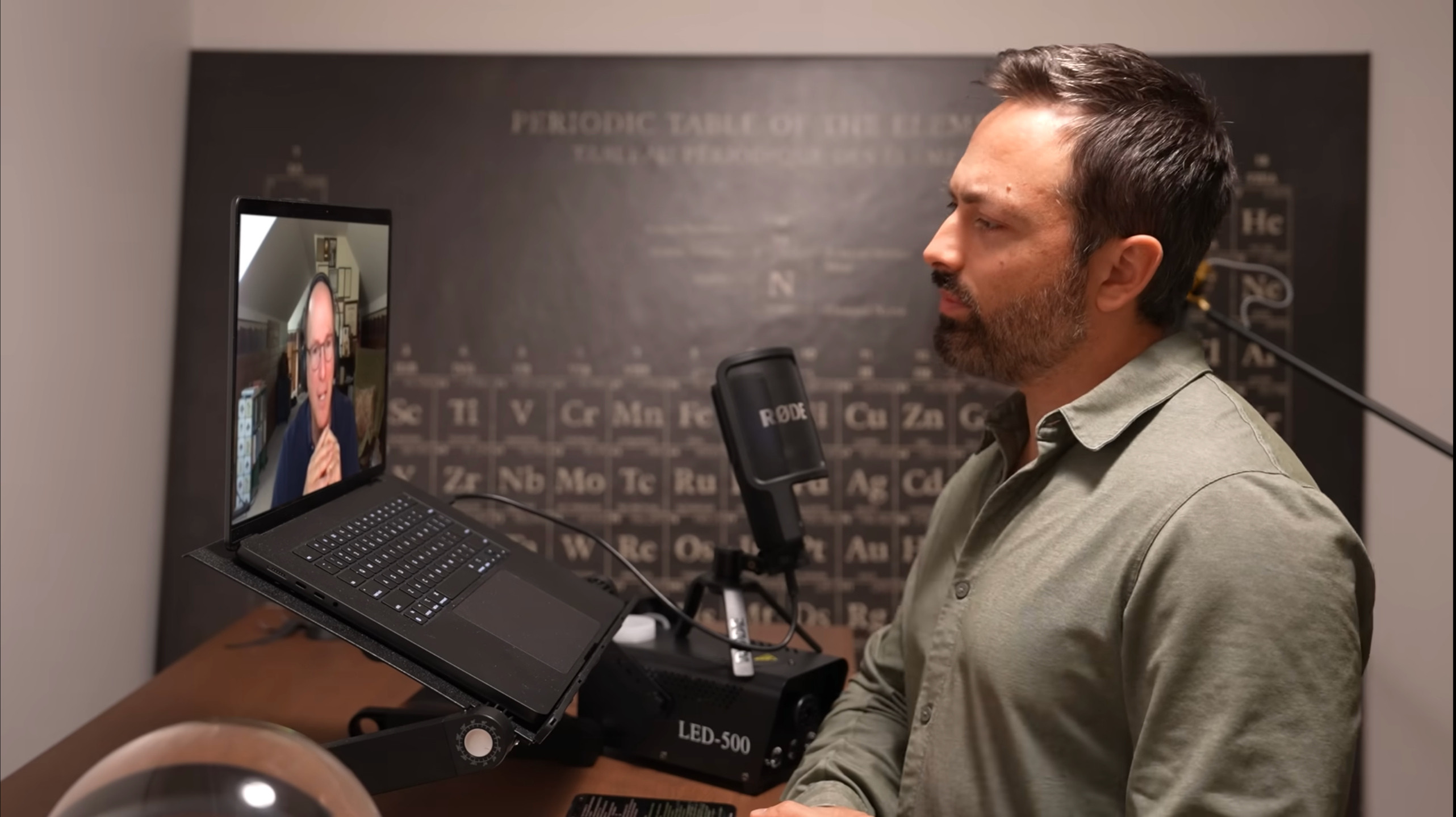Hey, so I just watched the Veritasium video “Something Strange Happens When You Trust Quantum Mechanics” (https://www.youtube.com/watch?v=qJZ1Ez28C-A), and it got me thinking.
The video talks about how light takes every possible path and ends up following the one with the least action. Super cool concept. But then, around the 30-minute mark, there’s this wild experiment where a laser is aimed at one side of a mirror, and there’s a diffraction grating placed on the other side. Even though the laser isn’t hitting the grating directly, you still see light coming out from that side. That part really tripped me up.


So here’s my question: Where is the energy for that “other path” coming from?
My gut says energy has to be conserved, so if light is somehow taking a new path via the grating, does that mean the original laser beam is losing energy? Maybe it just gets dimmer?
But then I thought… what if you could make a really clever diffraction setup that always pulls light along some super-efficient path? Could you, in theory, siphon off light energy from a bulb on the other side of the planet without anyone near the bulb noticing?
And if the original beam’s intensity is not lowered, then we would have generated free energy!
So is this really about energy moving along a new path, or are we just bending scattered light in a clever way to make it look like something more mysterious is going on?
I call BS on this particular experiment. I just don’t trust that they did it right.
Those $2 gas station lasers shoot faint light out in a large cone. What I mean is, look at the barrel of one of those lasers when it’s on. (Don’t aim it at your eye, obv.) There is almost a 180° range where you can see red light at the tip of the laser.
He’s holding the laser directly above the mirror at a 45° angle, so some of that scattered light will be hitting the mirror. Just because the camera can’t see the laser’s tip in the mirror doesn’t mean it’s not visible from the mirror’s perspective. There’s an enormous amount of parallax between the two perspectives. It’s so stupid that he looks at the camera’s view and says, “You cannot see the laser light at all, right?”, and doesn’t realize it’s because of parallax! 🤦
Meanwhile, even we the viewers can see laser light in our camera when it’s not aimed even remotely toward us. Look:


So this diffuse light is hitting the mirror and film, and because it’s a diffraction grating, some of it is redirected to the camera.
Do I doubt that there are bizarre physics that can happen in proper experiments like this? No. I don’t doubt people like Feynman. I just think this experiment is bullshit. Much like the entire channel.
The rest of this comment is just a rant. You should probably stop reading.
I can’t stand that guy’s absolutely fake reaction. There’s no way he didn’t do this experiment a few other times in front of the camera, and he’s just making this over-the-top, fake, hysterical, “WHAT!? OH MY GOD, NO WAY!” Over and over. Ugh.
Speaking of fake. Why is the video call on this laptop screen edited in? It jumped right out at me as soon as I saw it.

The top and bottom edges of the video aren’t parallel to the screen, and there’s no glare. The bottom edge is the worst:

Why would he fake this? It’s a one-second clip. It’s not even important. I guess he needed more B roll of himself looking thoughtful and nodding.
I hate Veritasium ever since that incredibly dumb video about the “speed of electricity” where he made electricity sound all mystical and magical, and didn’t once use the word “induction”, and basically lied about everything. It was so bad that a dozen other science YouTubers had to make reaction videos explaining how wrong he was. Like Alpha Phoenix.
Veritasium is overproduced garbage masquerading as science.
Cool video. Doing the double-slit experiment in my freshman physics class is a favorite memory from college. Seeing it in person blew everyone’s minds, even the kids who had learned about the experiment before.
If you google “is energy conserved in the double-slit experiment” you’ll find some physics forums with decent answers. Basically, the total energy emitted by the light source does not change. Energy is conserved. Don’t think of the laser light as a discrete beam that is being split off onto a second path. Instead, imagine that the laser light is constantly shining all over that foil and card. The dark regions appear dark because the light waves there are canceled out by interference from adjacent light waves. Similarly, the red areas are illuminated because in those areas the adjacent waves did not cancel each other out. The bright spots visible on the polarized foil occur because the polarizer blocks thin regions of the light, preventing them from canceling out adjacent light that wasn’t blocked. So light wasn’t redirected there, but was always there and was simply made visible to us by the effect of the polarizer.
Light, quantum mechanics, and the probabilistic nature of the universe are all real head trips. I still struggle to wrap my mind around them. As such, there’s a good chance my simplistic paragraph above is incorrect or misleading, so take my answer with a grain of salt.
I don’t think this fully answers OP’s question, though (at least as I understand it): while a photon’s wave function spreads out everywhere including the diffraction grating and card, what counts for conservation of energy is where the photon is actually observed. So if we manipulate the interference pattern of the wave function to cause a photon to be observed where the probability would normally cancel to zero—and if the probability of observing the photon somewhere remains one—does that accordingly reduce the probability of observing the photon where we would otherwise have expected to see it?
At this point I have to admit that I am out of my depth. We need a real physics major to chime in.
de Broglie’s work is relevant AND FASCINATING IMO and here’s part 3 of a series that goes into it from a channel of a physics professor with great skills instead of a youtuber (however popular) https://youtu.be/2z8D-NqnBk4
Ah so my intuition was correct that the laser experiment was wrong, the extra light we see was from the scattered light and not from the laser beam. So if we were to somehow minimize the scattering from the source and just keep the beam, we would not see the light on diffraction grating.
If we had to really bend the main beam, we would have to introduce potentially some medium where light travels slower(glass/water) to beam on one side of the reflection… in which case the original path would have almost 0 energy and almost all energy has been transferred to a new path.



